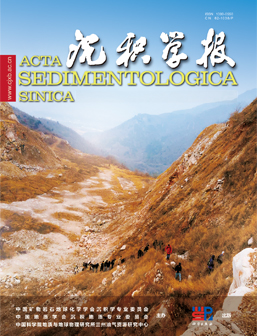Controls on shallow water delta front sandbodies architecture by lake level fluctuation - insights from digital outcrops
doi: 10.14027/j.issn.1000-0550.2024.055
- Received Date: 2024-01-31
- Available Online: 2024-05-23
-
Key words:
- Ordos Basin /
- unmanned aerial vehicle oblique photography /
- digital outcrop /
- delta front /
- architecture model /
- Lake level fluctuation
Abstract: Abstract: [Objective] In the middle and late stages of oil and gas field development, studying sand architecture is key to excavating residual oil and enhancing recovery. Precisely interpreting similar outcrops can provide a comparable prototype model for predicting underground reservoir architecture. [Methods] The shallow water delta profiles of the Yan'an Formation in the Kaokaowusu Gully and Gulf Mining Industry in the Ordos Basin were the research objects. UAV oblique photography was used to obtain massive outcrop image data, and then 3D digital outcrops were established. Detailed architecture interpretation of digital outcrops was carried out by combining field investigation and indoor analysis. [Results and Discussions] The developmental characteristics and evolutionary models of shallow water delta front architecture during the rising lake level were defined. When the lake level is low, mainly trunk-type distributary channels are developed, with widths of 23.3~48.4 m, thicknesses of 0.89~1.81 m, and width-to-thickness ratios of 26.74. The sandbody superimposition patterns are mainly overlay type. As the lake level increases, fork-type distributary channels, mouth bars, sand sheets, and subaqueous distributary bays gradually develop. The width of the mouth bar is 53.9 m, the thickness is 2.21 m, the width-to-thickness ratio is 24.39, and the superimposition pattern is mainly joint type. When the lake level is higher, mainly terminal-type distributary channels, mouth bars, and sheet sand architectural units are developed. The width of the terminal-type underwater distributary channel ranges from 4.7 to 40.6 m, the thickness ranges from 0.4 to 1.03 m, and the width-to-thickness ratio is from 11.75 to 24.56, isolated in the muddy deposit. [Conclusions] When the supply of material sources is relatively stable, the increase in lake level leads to an increase in accommodative space. The architectural units evolve from trunk-type distributary channels to terminal-type ones, depositing mouth bars and sand sheets. The size of the sand body decreases, but the width-to-thickness ratio increases. Overall, the sand-to-ground ratio decreases, spatial connectivity decreases, and reservoir heterogeneity is enhanced.
| Citation: | Controls on shallow water delta front sandbodies architecture by lake level fluctuation - insights from digital outcrops[J]. Acta Sedimentologica Sinica. doi: 10.14027/j.issn.1000-0550.2024.055 |






 DownLoad:
DownLoad: